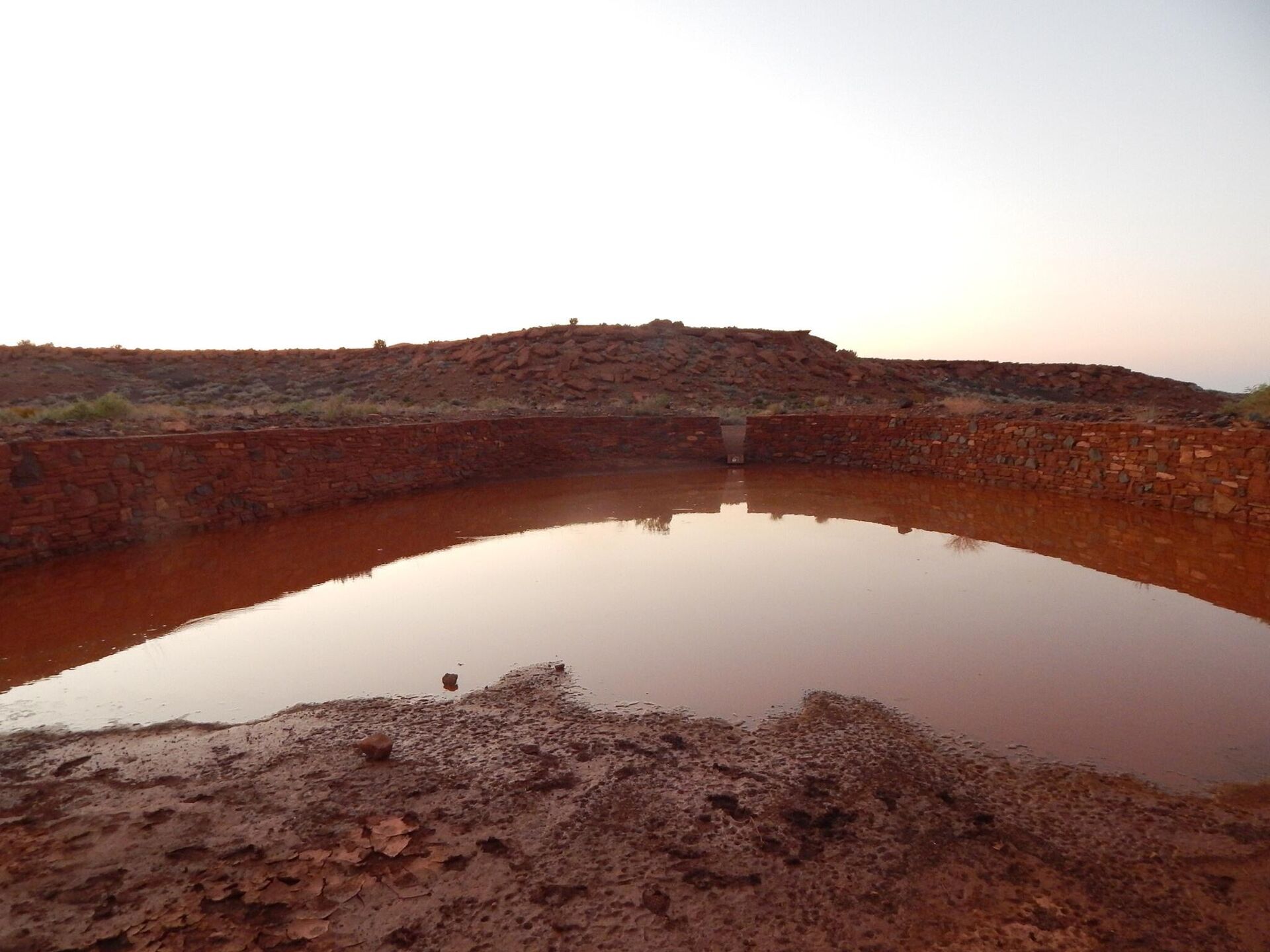https://sputnikglobe.com/20211006/three-eyed-dinosaur-shrimp-spotted-after-arizona-monsoon-season--1089695822.html
Three-Eyed 'Dinosaur Shrimp' Spotted After Arizona Monsoon Season
Three-Eyed 'Dinosaur Shrimp' Spotted After Arizona Monsoon Season
Sputnik International
Many areas of the US Southwest have observed considerable amounts of rainfall during the summer, including the metropolitan area of Flagstaff, Arizona. The... 06.10.2021, Sputnik International
2021-10-06T01:58+0000
2021-10-06T01:58+0000
2022-08-06T13:32+0000
arizona
eggs
monsoon
crustacean
science & tech
https://cdn1.img.sputnikglobe.com/img/07e5/0a/06/1089695733_0:168:2048:1320_1920x0_80_0_0_1718e2a08fa8ac2193e9cb47882f4eb2.jpg
Officials with northern Arizona's Wupatki National Monument have detailed that small groups of triops, or "dinosaur shrimp," have recently been found swimming in temporary lakes that formed following a season of torrential downpours. Lauren Carter, a lead interpretation ranger at Wupatki National Monument, told Live Science that triops, which "look like little mini-horseshoe crabs with three eyes," lay eggs that can remain dormant in the desert for decades, waiting for an optimally wet season to arrive.Visitors of the national park began pointing out the unusual hatchlings earlier in the summer, with most sightings around a vernal pool created in the ceremonial ballcourt. At first, the lead interpreter suspected that toads had ventured into the temporary freshwater pond to lay their eggs."I just scooped it up with my hand and looked at it and was like 'What is that?' I had no idea," she recounted. Upon further research, Carter has come to the preliminary determination that the mistakenly-named tadpoles belong to Triops longicaudatus, a species of freshwater crustacean found in vernal pods across North, Central and South America. However, a scientific analysis will be necessary to confirm the determination, Carter noted.While Triops have been labeled "dinosaur shrimp" due to their evolutionary history, the park official does not believe the label of "living fossil" is applicable to this critter. Triops can grow up to 1.5 inches (around 3.8 centimeters), and have two large compound eyes similar to that of a bee. A third eye, dubbed an ocellus, or simple eye, is filled with photoreceptors that assist the animal in detecting light.
arizona
Sputnik International
feedback@sputniknews.com
+74956456601
MIA „Rossiya Segodnya“
2021
News
en_EN
Sputnik International
feedback@sputniknews.com
+74956456601
MIA „Rossiya Segodnya“
Sputnik International
feedback@sputniknews.com
+74956456601
MIA „Rossiya Segodnya“
arizona, eggs, monsoon, crustacean, science & tech
arizona, eggs, monsoon, crustacean, science & tech
Three-Eyed 'Dinosaur Shrimp' Spotted After Arizona Monsoon Season
01:58 GMT 06.10.2021 (Updated: 13:32 GMT 06.08.2022) Many areas of the US Southwest have observed considerable amounts of rainfall during the summer, including the metropolitan area of Flagstaff, Arizona. The wetter-than-average monsoon season appears to have triggered a change in some ecosystems, activating once-dormant, dehydrated eggs.
Officials with northern Arizona's Wupatki National Monument have detailed that small groups of triops, or "dinosaur shrimp," have recently been found swimming in temporary lakes that formed following a season of torrential downpours.
Lauren Carter, a lead interpretation ranger at Wupatki National Monument, told Live Science that triops, which "look like little mini-horseshoe crabs with three eyes," lay eggs that can remain dormant in the desert for decades, waiting for an optimally wet season to arrive.
Visitors of the national park began pointing out the unusual hatchlings earlier in the summer, with most sightings around a vernal pool created in the ceremonial ballcourt.
"We knew that there was water in the ball court, but we weren't expecting anything living in it," Carter told the outlet, referring to a period shortly after a monsoon in late July. "Then a visitor came up and said, 'Hey, you have tadpoles down in your ballcourt."
At first, the lead interpreter suspected that toads had ventured into the temporary freshwater pond to lay their eggs.
"I just scooped it up with my hand and looked at it and was like 'What is that?' I had no idea," she recounted.
Upon further research, Carter has come to the preliminary determination that the mistakenly-named tadpoles belong to Triops longicaudatus, a species of freshwater crustacean found in vernal pods across North, Central and South America.
However, a scientific analysis will be necessary to confirm the determination, Carter noted.
While Triops have been labeled "dinosaur shrimp" due to their evolutionary history, the park official does not believe the label of "living fossil" is applicable to this critter.
"I don't like the term 'living fossil' because it causes a misunderstanding with the public that they haven't changed at all," Carter said. "But they have changed, they have evolved. It's just that the outward appearance of them is very similar to what they were millions of years ago."
Triops can grow up to 1.5 inches (around 3.8 centimeters), and have two large compound eyes similar to that of a bee. A third eye, dubbed an ocellus, or simple eye, is filled with photoreceptors that assist the animal in detecting light.


